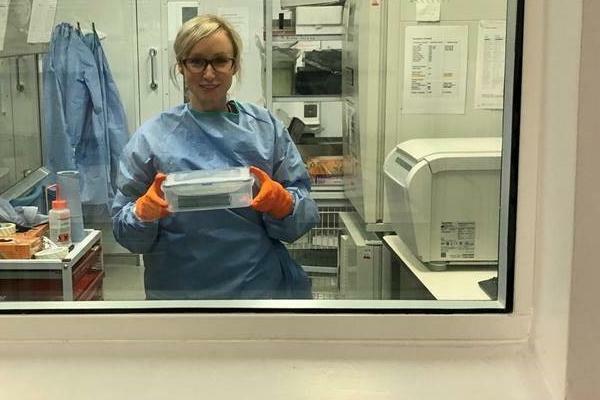
Covid-19 response
The role of the Centre for Drugs and Diagnostics
Establishment of a COVID-19 preclinical pipeline for therapeutics
CDD’s therapeutics team, including staff of Professors Biagini, Ward and Dr Joe Turner groups, have been working with a cross-campus (University of Liverpool) consortium of some 40 scientists to establish a COVID-19 preclinical pipeline to identify, prioritise and validate preclinical candidates for therapeutics suitable for clinical Phase I and Phase II studies. These activities include the set-up and validation of in vitro screening platforms and in vivo COVID-19 disease models, including pharmadynamic-pharmakinetic (PD-PK) modelling and simulations to predict clinical efficacy. The pre-clinical pipeline has been used to screen drug libraries as well as new chemical entities (NCEs) and new drug combinations. The results from the pre-clinical pipeline provides evidence-based data to inform onward clinical trial efforts such as the BMGF-funded MALCOV of Professor Feiko ter Kuile.
Dose prediction for repurposing nitazoxanide in SARS-CoV-2 treatment or chemoprophylaxis
Many clinical trials have been initiated with current medications, but assessments of the levels of active drug in the blood plasma and lungs at the selected doses have not featured in the prioritisation process. Recently the team at LSTM and its partners have shown, using PBPK modelling, the anthelmintic nitazoxanide and, importantly, its active metabolite as having broad antiviral activity against SARS−CoV−2 and achieved effective plasma and lung concentrations using proven safe doses of nitazoxanide.

Modelling of Systemic versus Pulmonary Chloroquine Exposure in Man for COVID-19 Dose Selection
The antimalarial Chloroquine has attracted intense attention as a potential clinical candidate for prevention and treatment of COVID-19 based on reports of in-vitro action against SARS-CoV-2. The team at LSTM and colleagues at the University of Liverpool have begun to explore the PK-PD relationship of chloroquine for COVID-19 by modelling both achievable blood plasma and lung drug concentrations.

Prioritisation of potential anti-SARS-CoV-2 drug repurposing opportunities based on ability to achieve adequate target site concentrations derived from their established human pharmacokinetics
The team at LSTM, alongside the University of Liverpool, have prioritised candidates with the best chance for success in therapy or chemoprevention of Covid-19 based upon the currently available in vitro activity and human plasma pharmacokinetic data. Studies will continue to explore the context of achievable active drug exposures in humans, especially within the lungs, in order to maximise the potential for success of proposed human clinical trials.








